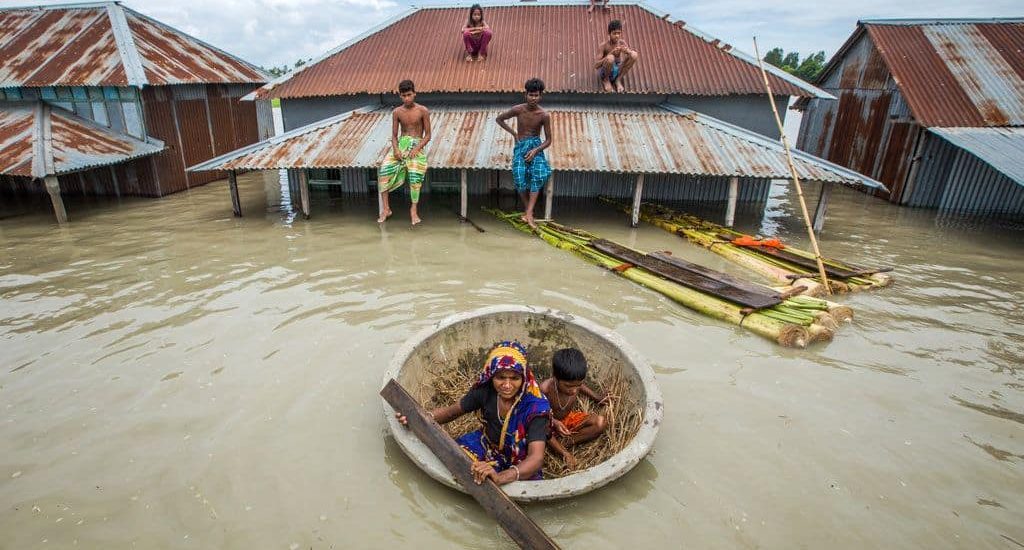- October 13, 2025
- Posted by: Regent Harbor Team
- Category: Finance

From Reactive Spending to Proactive Investment: The Future of Disaster Risk Reduction
A New Era of Disaster Preparedness
October 13 is International Day for Disaster Risk Reduction. This year’s theme, “Fund Resilience, Not Disasters,” highlights the need to shift from reactive spending to proactive investment in reducing disaster risks. The world’s most disaster-prone region—Asia and the Pacific—needs smarter investments in resilience, guided by tools like SatGPT.
Developed by the United Nations Economic and Social Commission for Asia and the Pacific (ESCAP), SatGPT offers a next-gen solution for flood risk mapping. By analyzing satellite images and using AI, it provides insights that guide risk reduction investments, minimizing human and economic losses.
The Power of Technology in Disaster Management
Thanks to advancements in satellite imagery and AI, we can now map hazards and vulnerabilities with precision. This tech shift is crucial for building resilience and safeguarding livelihoods. Tools like SatGPT play a vital role in delivering consistent, accessible, and open-source risk information, enabling evidence-based investment decisions in disaster risk reduction.
The tool contributes to the Early Warnings for All Initiative by enhancing risk knowledge and offering historical flooding data. It also supports improved forecasting models and response strategies.
Local Initiatives Using Big Data
Countries in the region are leveraging earth observation data and digital innovations for disaster management. For instance, the Philippine Space Agency’s Integrated Network for Space-Enabled Actions toward Sustainability (PINAS) empowers communities with space data, fostering collaboration between citizens and sectors.
Indonesia is piloting an AI flood mapping project in Jakarta and North Java Island, integrating SatGPT into its platform. Meanwhile, Thailand has developed the Check Nahm flood warning app, which combines data from multiple sources to provide real-time flood updates and forecasts. Its cloud-based integration allows it to incorporate SatGPT’s mapping capabilities.
Addressing Social Inequality in Disaster Scenarios
At the University of Hong Kong, researchers illustrate how flooding exacerbates social inequalities by integrating geospatial, AI, and socioeconomic data. This approach reveals that people with weaker socioeconomic status face higher risks and impacts.
In line with the Jakarta Ministerial Declaration on Space Applications for Sustainable Development, efforts are underway to equip government professionals with skills in geospatial analysis and AI. These tools are critical for making informed disaster risk reduction decisions.
The Human Element in Technological Solutions
While championing AI-driven disaster tools, it’s essential to remember the human lives they aim to protect. Behind every dataset are real communities facing risks. Keeping empathy and purpose at the core of innovation will ensure our efforts lead to meaningful impacts.
You might also like: Tropical Cyclone Forecasting Is Getting More Challenging. Can AI Offer Solutions?
Supporting Our Efforts
Our non-profit newsroom delivers free climate coverage, relying on donations to sustain operations and maintain editorial independence. Consider supporting our mission.
Learn more:
About the Authors
- Kareff Rafisura – Economic Affairs Officer, ESCAP
- Sheryl Rose Reyes – Consultant, ESCAP
- Thanabordee Sakunarunphet – Geo-Informatics Officer, Geo-Informatics and Space Technology Development Agency
- Natdanai Punsin – Geo-Informatics Officer, Geo-Informatics and Space Technology Development Agency
- Emi Yati – Researcher, National Research and Innovation Agency
